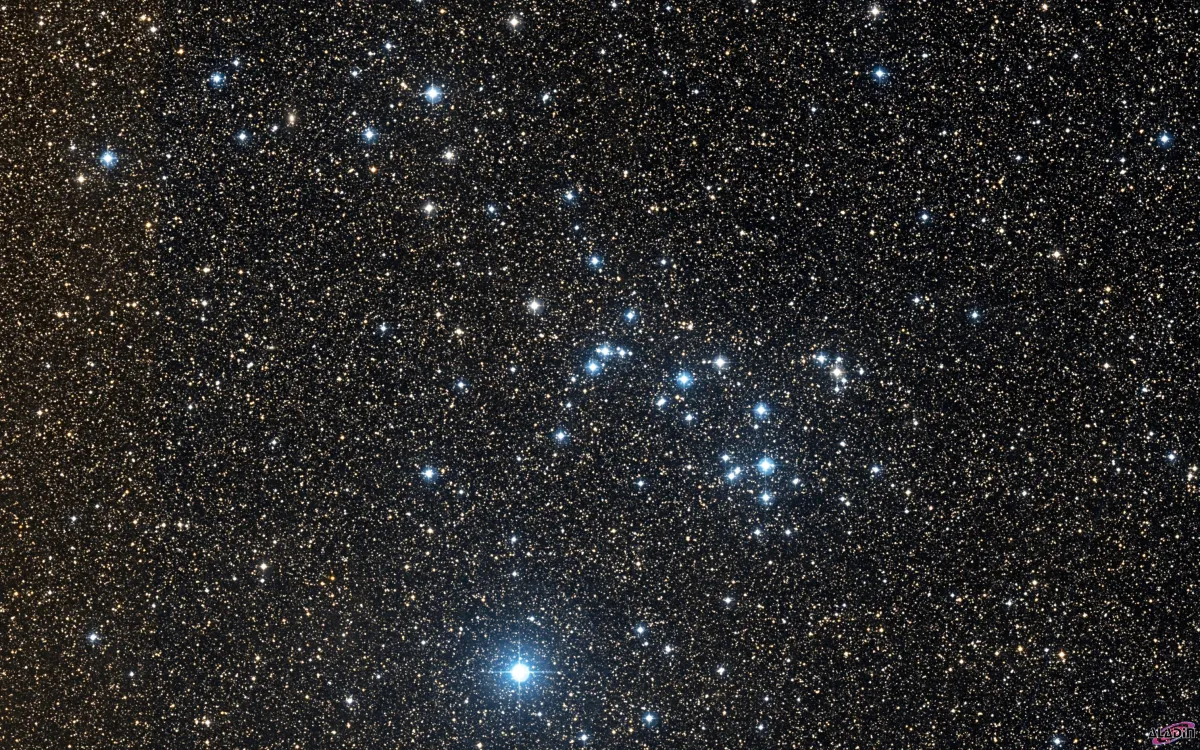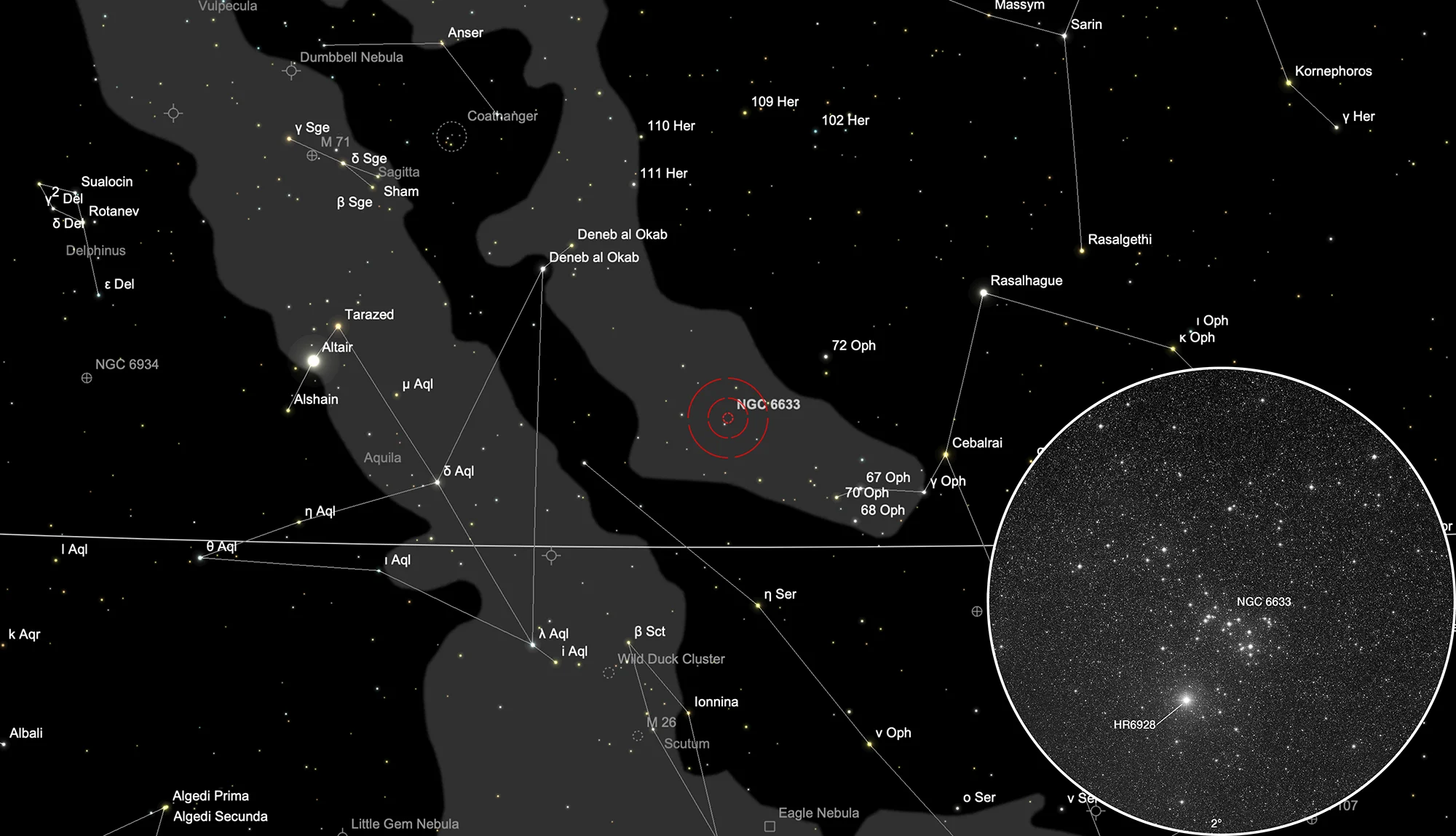Open Cluster NGC 6633

History
Swiss astronomer Philippe Loys de Chéseaux discovered this open cluster in the years 1745-46 using a small refractor. His discoveries were presented 1746 to the French Academy of Science, but seemed to be forgotten. In 1759 Le Gentil mentioned them in a private, but it wasn't until 1892 that Guillaume Bigourdan made them public. [196]
Using her 4.2-inch comet-sweeper Caroline Herschel rediscovered the cluster on 31 July 1783, along with IC 4665. She entered it as #8 in her discovery log and noted: «About halfway from S Serpentarii [72 Oph] towards Theta Serpentis, a cluster of large stars. I counted about 80. Messier has it not.» On 30 July 1788 William Herschel logged this cluster as VIII 72 and noted: «A coarsely scattered cluster of large stars. C. H. 1783» As Dreyer was not aware of de Chéseaux he credited Caroline Herschel with the discovery of NGC 6633. [313, 364, 464]
Physical Properties
| Designation | NGC 6633 |
| Type | OCL (III2m) |
| Right Ascension (J2000.0) | 18h 27m 15.1s |
| Declination (J2000.0) | +06° 30' 30" |
| Diameter | 20 arcmin |
| Visual magnitude | 4.6 mag |
| Metric Distance | 0.385 kpc |
| Dreyer Description | Cl, lC, st L |
| Identification, Remarks | WH VIII 72; GC 4410; OCL 90 |
Finder Chart
The open cluster NGC 6633 is located in the constellation Ophiuchus. On 28 June it is in opposition to the Sun and hence culminates at local midnight. The best viewing time is in the months February to December.
